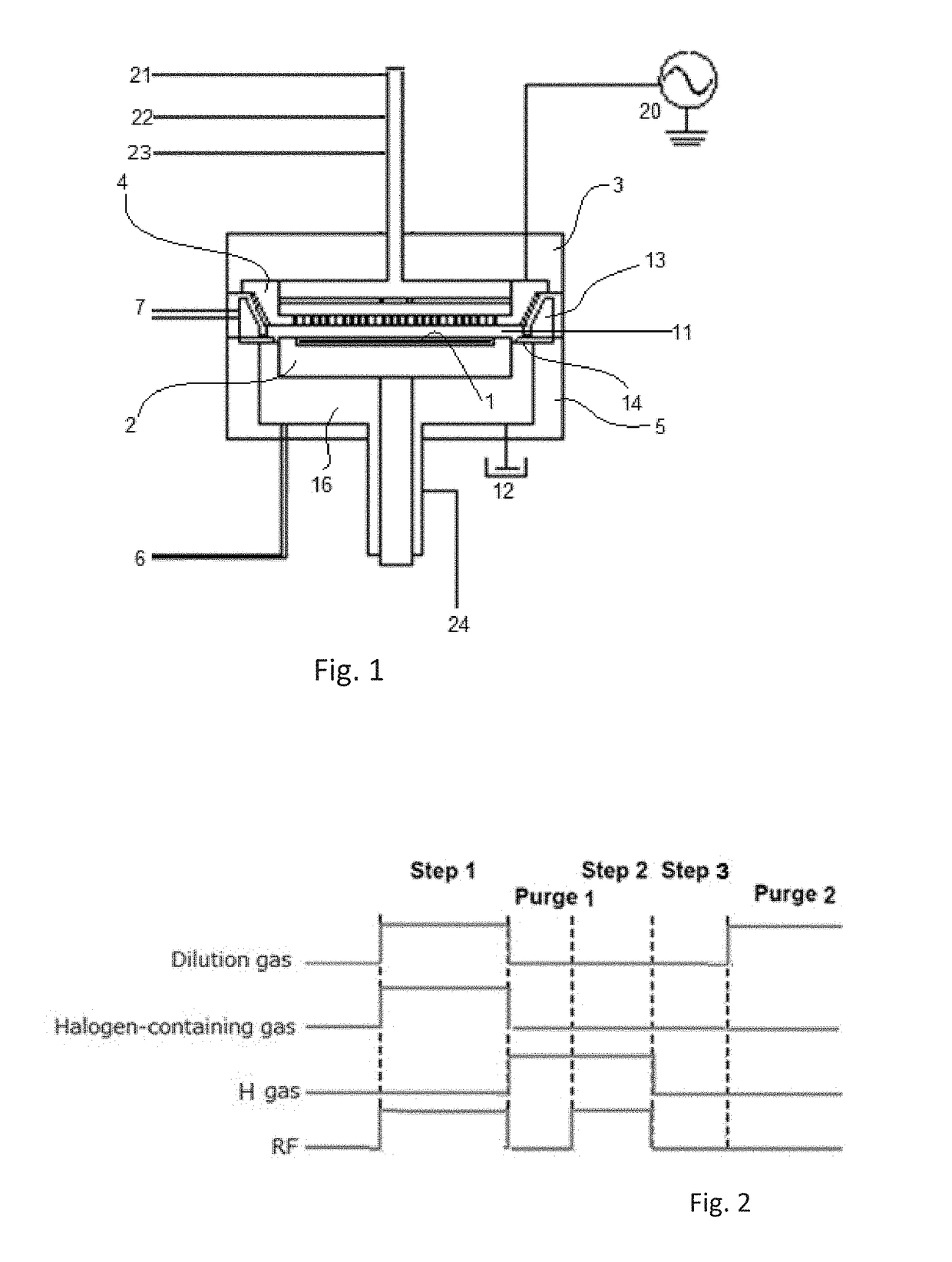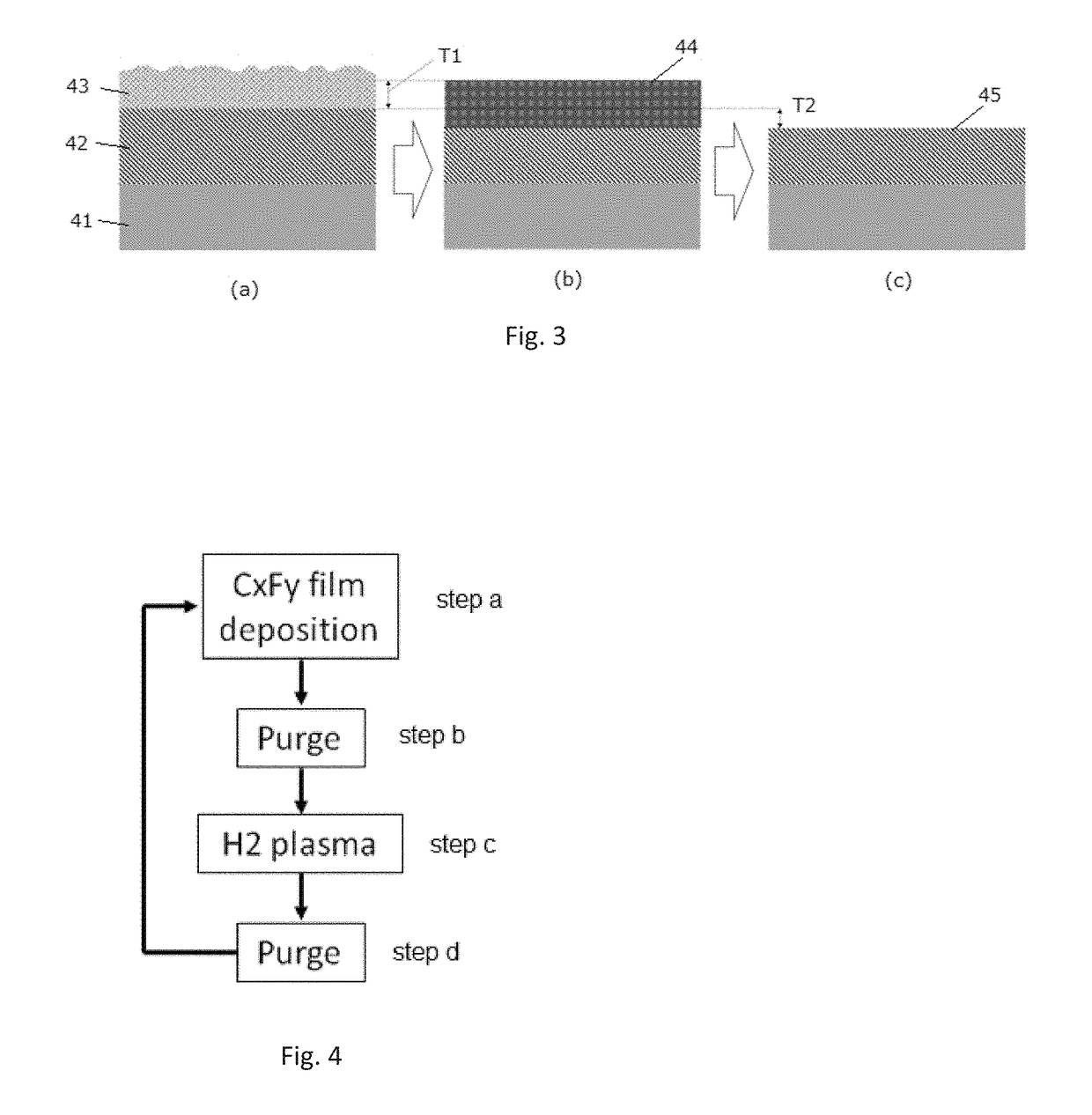Method of atomic layer etching using hydrogen plasma
a technology of hydrogen plasma and atomic layer, which is applied in the direction of basic electric elements, semiconductor/solid-state device manufacturing, electric devices, etc., can solve the problems of poor in-plane uniformity of etching of film on a substrate by ale, inability to achieve good in-plane uniformity of etching, and suffer from in-plane uniformity. etching, the effect of high selectivity
- Summary
- Abstract
- Description
- Claims
- Application Information
AI Technical Summary
Benefits of technology
Problems solved by technology
Method used
Image
Examples
example 1 (
Prophetic Example)
[0055]A silicon oxide film, silicon nitride film, and silicon carbide film are formed at a thickness of about 20 nm by PEALD or PECVD as a target layer on 300-mm substrates, respectively. Deposition of an etchant film (CF film) and etching of each target layer are conducted under the conditions shown in Table 3 below using the plasma-assisted etching apparatus illustrated in FIG. 1. The sequence used in each etching cycle is shown in FIG. 2.
TABLE 3(numbers are approximate)Conditions for deposition (PECVD)Substrate temperatureRoom temperaturePressure2.0 PaDeposition gasC2F6Noble gas (as a dilution gas)ArFlow rate of deposition gas10 sccm(etchant gas) (continuous)Flow rate of dilution gas2000 sccm(continuous)RF power for a 300-mm wafer100 W; 13.56 MHz (or 27 MHz,6 MHz, or microwaves)Duration of “RF” (Step 1)2.0 sec.Distance between electrodes30 mmGrowth rate per cycle (nm / cycle)0.7 nm / cycFilm thickness (nm)2.0 nmConditions for etchingSubstrate temperatureSame as in d...
PUM
 Login to View More
Login to View More Abstract
Description
Claims
Application Information
 Login to View More
Login to View More - R&D
- Intellectual Property
- Life Sciences
- Materials
- Tech Scout
- Unparalleled Data Quality
- Higher Quality Content
- 60% Fewer Hallucinations
Browse by: Latest US Patents, China's latest patents, Technical Efficacy Thesaurus, Application Domain, Technology Topic, Popular Technical Reports.
© 2025 PatSnap. All rights reserved.Legal|Privacy policy|Modern Slavery Act Transparency Statement|Sitemap|About US| Contact US: help@patsnap.com


